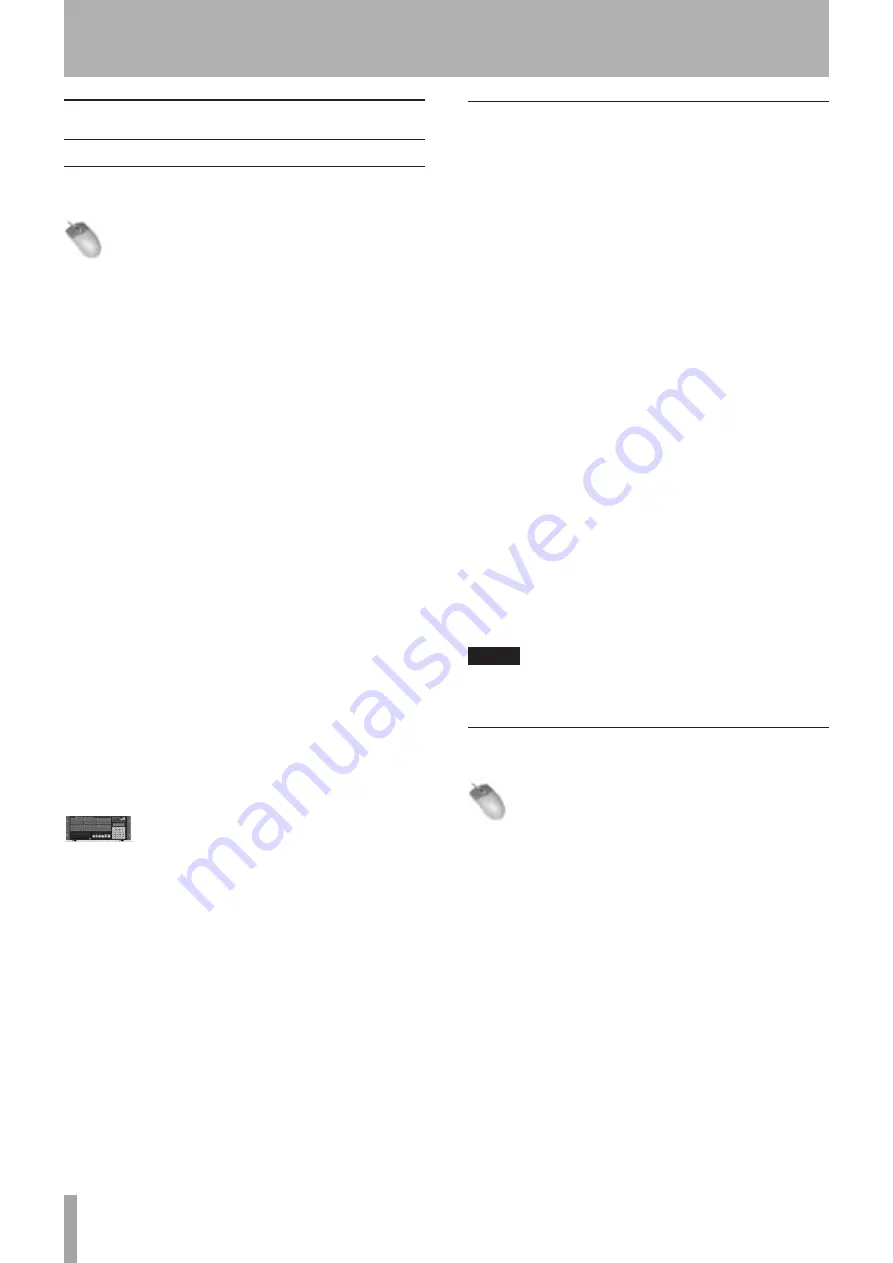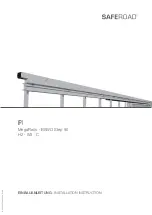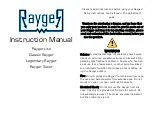
26
TASCAM X-48MKII
5 – Recorder
Working With Projects
Creating a New Project
Mouse/Keyboard Operation
1 Click on the
File
menu and select
New Project...
or
press Control-N on the keyboard.
2 The display will ask you if you wish to save changes
to the current project. Click on
Yes
or
No
.
3 The display prompts you for the following
information:
Name
Type a name for the project using the keyboard
Drive
Select which drive to record to
Mode
Either
Non-Destructive
or
Destructive
. See next section for
explanation.
Sample Rate
The sample rate for the session. Most users will choose
either
44.1k
(CD-standard),
48k
(DVD-standard),
88.2k
(2x
CD) or
96k
(2x DVD). A number of other sample rates are
provided for post production use. See “Sample Rates“
(page 18) for more information on when to use these
sample rates.
Bit Depth
Choices of
16-bit
,
24-bit
, or
32-bit Floating Point
are provided.
4 Click
OK
when complete.
Front Panel Operation
1 On the front panel of the X-48MKII, press the PROJ
button, press the
5
/
b
arrows to select
New
and
press CHNG.
2 Press the Yes or No button to save the current
project.
3 Choose a drive to record to with the
5
/
b
buttons
and press ENTER.
4 Select the bit depth
16 Bit
,
24 Bit
or
Floating
Point
and press Enter.
5 Give the project a name using the
5
/
b
buttons to
change letters, the CHNG button to select the next
letter. Press Enter to create the project or EXIT to
cancel.
Destructive versus Non-Destructive
Recording
The X-48MKII provides two methods for recording, Non-
Destructive (the default) and Destructive.
When Non-Destructive recording is selected, new
recordings are written to the hard drive as new WAVE
files. With this method, you can return to an old take of
a recording using Undo or by editing the previous take.
The disadvantage to this method is that your hard drive is
filled with Wave files. If you imported all of these files into
a digital workstation, you may not be able to tell which
was the final approved recording unless you had exported
an AAF file as well.
Using Destructive recording is just like using a multitrack
tape, and is often referred to as “tape mode.” If you look at
the hard drive after recording this way, you will see one
long WAVE file for every track that you recorded to. Film
re-recording mixers use destructive recording to record
their final mixes. As they punch in and out of their mix
recorder all day, they only want one master file of the
approved mix to encode into Dolby Digital or however
it’s being processed for release. Destructive recording
also has the advantage that it uses less hard drive space,
since old takes aren’t kept. But just like the multitrack tape
it emulates, when you record over something it’s gone
forever. There’s no undo in destructive recording mode.
DEST REC
is shown at the top center of the connected
display, and appears lit when in destructive mode.
NOTE
This has the same meaning as the
DEST REC (SYSTEM)
indicator on the front panel.
Opening a Project
Mouse/Keyboard Operation
1 Click on the
File
menu and select
Open Project...
or
press Control-O on the keyboard.
2 The display will ask you if you wish to save changes
to the current project. Click on
Yes
or
No
.
3 The
Open Project
window appears. At the top of
this window, click the
Up
button to navigate up a
level on your hard drive, or all the way up to see all
drives connected to the system.
4 Double-click on the folder containing your project.
You should see a project with the filename you
chose ending in an “
.ndr
” extension. Double-click
on this file to open the project.
















































